There’s a lot of things going on in the world, and in this little (more on this in a moment) corner of the world, one recent article brought together a few points that have been on my mind recently. As the nature of trade organizations go, they are paid to represent the interests of that particular slice of market. Sometimes it invariably means that you end up, wilfully or not, misrepresenting the reality in order to put your bosses in the most favorable light possible. Here is the head of NATO (the other one, National Association of Theatre Owners) talking about big budget movies going to streaming services:
I really don’t get the big budget movie going straight to a streaming service business model. I don’t exactly know how Disney made out with “Mulan,” but I don’t think it was a gigantic success financially. In a premium VOD model, you have to hope that people will pay $20 to watch a movie at home. Maybe that will work during a pandemic, but you won’t have the same kind of profits that you get when you have a standard theatrical release.
That sounds like a nice, awfully round number, that surely has lots of relevant research to back it up. Let’s try and unpack the numbers.
The average price of a movie ticket in US in 2019 was just over $9. Where does that money go? Turning to the excellent series of articles by Stephen Follows (here and here), we can see that around half the money left after paying the sales tax goes to the movie theater itself. There’s also distributor’s fees (which are quite high in overseas markets), sales agents fees, paying back investors etc. The big studios never talk about these numbers publicly, but I think that they are maybe seeing somewhere between $1 and $3 from the movie ticket price itself.
If that big budget movie cost $100M to make, that’s an awful lot of movie tickets to sell to cover not only the cost of making the movie, but also the cost of marketing and promoting it (that can be anywhere between 50% and 150% of the cost of making it). You need to make somewhere around $300M to get your initial investment back and start making profit. It’s no wonder that the big studios (Universal, Paramount, Warner, Disney and Columbia) have been taking fewer bets on new big stories without any “proven” track record, and instead churning out yet another installment and yet another sequel and yet another spin-off in the same universe. It’s also no wonder that these big studios are just small subsidiaries of much larger entertainment conglomerates. How much larger?
Domestic box office in 2019 was $11.4B, and globally it reached $42.5B. Now, again, this is not something that goes straight to the studios’ revenue column. Take away the 50% that the movie theater takes, take away another 20-30% that the overseas distributor charges you, take away all the additional fees detailed in Stephen’s posts, and maybe, just maybe you can put $10B collectively into the revenue column.
Universal is part of NBCUniversal which is, in turn, part of Comcast. Comcast revenue for 2019 was $108.9B. Paramount is part of ViacomCBS. Warner is part of WarnerMedia (along with HBO and CNN) which is, in turn, part of AT&T. AT&T revenue for 2019 was $181B. Disney (after having acquired Pixar, Marvel, Lucasfilm and 20th Century Fox) ruled the domestic market in 2019 with almost 40% share, and the parent conglomerate reported the revenue of $69.5B for 2019.
In the global scheme of things for these entertainment conglomerates, the movie business per se is almost a rounding error in the corporate spreadsheets. Not releasing “Wonder Woman 1984” or “Fast & Furious 9” is not going to be the end of them. And they can still continue doing that sweet cross-promotion thing by selling toys and other branded merchandise. But I digressed a bit. Let’s go back to the business of running a movie theater.
Apparently though, you’re not really in the business of running a movie theater. You’re actually in the business of selling ridiculously overpriced popcorn, candy and soda. So much so, in fact, that the coalition of the biggest and most popular movie theaters in San Fransisco is refusing to open up their doors if they are not allowed to charge the insane 400-500% markup for their stale popcorn, run-of-the-mill candy bars and soda cups that are filled to the brim with ice cubes. Even though the movie theaters are taking 50% off the top of every single ticket they are selling, they can’t turn a profit without the concession stand! But I digressed again. Let’s step back a bit more.
It used to be that the movie theater was the only viable screen to watch those big stories on. Well before the age of smartphones and dirt-cheap tablets, the TV screens were just not good. They were tiny, they were grainy, the picture was weirdly distorted, the colors were off, and that’s just off the top of my head. But that time is long gone, at least for the vast majority of viewers domestically and internationally. Yes, the initial investment of hundreds (and sometimes a couple of thousands) of dollars into a decent widescreen flat TV and a high-speed Internet connection is needed. But that has happened gradually over the last decade already.
There’s so much great content that is only available outside of the movie theaters. Just to throw a few names out there. Game of Thrones. Black Mirror. Ozark. Stranger Things. The Handmaid’s Tale. Westworld. Watchmen. Is there anybody out there refusing to watch one of these shows because they are not in the movie theater? Was “Interstellar” so much better in IMAX when you had to share it with a group of teenagers just a couple of rows ahead that were constantly on their phones? Was “1917” that much better on the big screen when a young couple have brought their screaming baby in because they didn’t – or couldn’t – afford the babysitter for the night? For that matter, was it worth paying $50 for the babysitter back when “Avatar” came out in 3D and the theaters were packed to the brim? I watched all of these again and again on my TV at home, and the size of the screen simply didn’t matter. And I’m not even talking about movies that I never watched in a movie theater. Movies like “North by Northwest”, “Key Largo” or “The Philadelphia Story”. Or more recent ones like “The Neon Demon”, “Moonrise Kingdom” and “Crimson Peak”.
“Mulan” is an amazing deal at $30. It’s a family movie. A family of four would pay $36 for the tickets, but also at least another $20 for the concessions. But let’s be realistic. It’s not another $20. It’s more like another $30 or $40. For something that you can literally get at $8 in your local grocery story. The exact same thing. But I digress again.
Disney gets to keep all of that money except for the tax. Instead of getting maybe $8-10 from that family of four, it gets to keep all of it. Sure, it might not see the same huge numbers that it used to see from the theatrical releases in the last few years, but if it makes back the same money, what difference does it make to Disney? It doesn’t even need to sell as many “units” to as many people to get the same profit. It already has a digital delivery platform – same as all the other big studios. It can afford to lose half the viewers (individual ticket buyers), and will still get the same money on its balance spreadsheet.
From Disney’s perspective, they are cutting out so many middlemen. Including the one that is the focus of this story. The one that claims to be such an indispensable part of the entire industry, and yet the one that can only turn profit by charging insane markups on concessions.
We’re in the middle of a global pandemic. It is dramatically accelerating changes across so many industries. The push and pull between the studios, the theaters and the streaming platforms was there all along in the last few years. It might have taken another 10-15 years to start cutting out the middlemen, to have the studios forge more immediate relationships with their customers – us, the viewers.
A part of me wishes that the studios were a bit more desperate to release the big blockbusters that were scheduled all through 2020 and then postponed again and again. A part of me wishes to see what kinds of innovations we might see down the road when going to a movie theater is not considered to be a vital part of releasing a movie. Does Disney make some sort of a Marvel Pass that lets me in on all that franchise movies and shows for a flat $50 a year? Do I get a refund if I stopped watching a movie partway through because I didn’t like it? Do I get some sort of a discount for watching the next “Fast & Furious” if I already paid the full price for the last one?
Back to the original quote, one last time. We only have one data point so far. Disney is charging $30 to watch “Mulan” at home. It’s a family movie. So it’s more like $7-8 per person for a family of four. And you save yourself another $25-30 by getting your own soda and popcorn. Netflix is certainly not charging people per show. In my bright future where I can get any new movie I want on the day it is globally available, it’s probably going to be closer to the current rental price. Maybe $5 for a mid-budget one, and around $10 for one of those big blockbusters. Because you don’t need to charge more when you cut out that concession-stand middleman out of the picture.
Continuing the ongoing series of interviews on fantasy user interfaces, it’s my honor to welcome Steven Bussey. His work can be seen on the screens of “Pacific Rim: Uprising“, “Mission Impossible: Fallout“, “Justice League” and his most recent project – “Underwater“. In this interview Steven talks about his life-long passion for movies, the path that took him into the world of screen graphics, and his take on the role of technology in our daily lives.
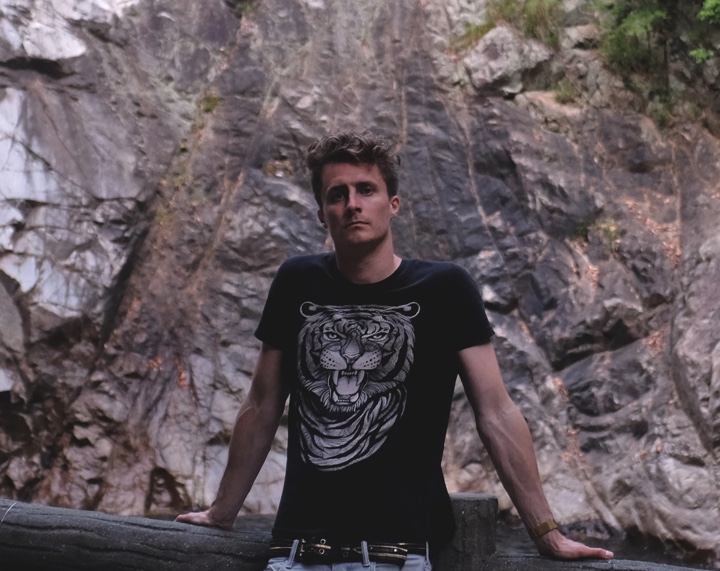
Kirill: Please tell us about yourself and what brought you to where you are today.
Steven: All the way back to when I was a kid, I always had a deep interest in movies. I was brought up with it in a familiar sense where my family would gather around and watch all kinds of movies together after a long day. The unrealistic movies I would have to watch for myself however and that would be movies like the original Star Wars that I would watch again and again from when I was very young. I would even watch the credits for most movies to much irritation to the rest of the family, I would read it all and listen to the music and thinking that one day I could maybe end up there somehow or another working on movies.
As the years went by, I started to discover more films by myself too, reading the newspapers and preparing for what I wanted to see over the weekend and tape them on VHS so that I could watch them again and again. “Die Hard” was one of the first movies I really remember when it comes to screen graphics and UI. It had these cool ’80s CRT monitors with all kinds of realistic graphics on them which served as an important storytelling device. In the movie bad guys hacked the entire building, shut it down and used it as a tool to lock people in, all done with sophisticated technology. I watched it many times along with the Star Wars movies and I will never forget those specific movies.

Screen graphics of “Die Hard”.
Growing up with comics and books of all kinds, I didn’t know exactly what, but I always had it in my mind that it would be something creative. Time was flying and all of a sudden I had to choose which college or university to go to and it was really hard, because I had no idea how to get into an industry working with design or art.
It was during the high school years that I discovered design through my sister. She did a design course in the same college that I had in mind so I was really looking forward to the final year at this particular college where I could explore drawing and design classes. This college was very narrow minded however and my study counselor told me that working in the creative industry was probably a bad idea, because it would be hard to get an internship and all kinds of other nonsense. So he recommended me to study history instead and become a teacher. I failed my last exam in history, as if it was some sort of lucky revenge, because he was also the history teacher there and I had been doing great so far. So that idea was quickly discarded.
After mandatory military service, I went back to kind of a prep school for university. Officially it was a marketing school, but you could take loads of optional courses in computer, web and graphic design. It was there that I met the most important person on this entire journey. He showed me where to really study graphic design and how to work with creativity.
He said that there was a school further down south of Denmark where they taught graphic design and that I should apply there. So that is what I did. I spent loads of time getting ready for it and making a portfolio doing all kinds of tutorials in Illustrator and Photoshop. I got in and there I did my bachelor degree in graphic design which was three years of hard work.
We had courses in Flash, web, advertising etc and it was when one of the teachers showed the class the title sequence for “Catch Me If You Can” and that planted the idea that not only can you illustrate, design and work with typography, but you can also animate these things. That inspired me to always keep motion graphics in the back of my mind during all of the remaining courses.
But during those 3 years at university which coincided with the global financial crisis of 2008, I figured it was going to be a bit hard to find a job in Denmark. So I did an internship in London at Bunch Design to open up my chances for a job opportunity plus I felt there was more stuff there that could help me work with what I wanted to do. Jo Kotas was running the studio at the time and gave me the chance to work on some amazing projects and meet all kinds of people. But the crisis was still around so I did my master’s degree back in Denmark. It was still focused on graphic design and typography, but I always had that little spark of motion graphics and animation that I really wanted to dive into. I was still pushing it into my projects as I was working on my degree and I was still inclined to work in London. After more interviews and hard work I got my foot in the door with a big studio called EmpireDesign.
I asked them if they were doing internships or tutoring programs and they replied that I was welcome to come in for a couple of weeks. I packed my bags and went, even though I was still busy with the final project on the masters degree. EmpireDesign does posters and trailer graphics for films which was perfect for me, thinking back to my childhood and now somehow getting to work with movies for real. I started out animating posters and promotional content for feature films and later making trailer graphics too.
During my masters and full-timing it at EmpireDesign, me and my buddy (shout out to Martin Aggerholm) started exploring the UI scene that started to become more and more visible in movies and video games like Call of Duty and many other games. They would all have these techy and cinematic preloader screens and cut-scenes which where super immersive. That’s when we discovered studios like BlindLtd, SPOV and Territory and other studios all over the world that were defining this new style of work.
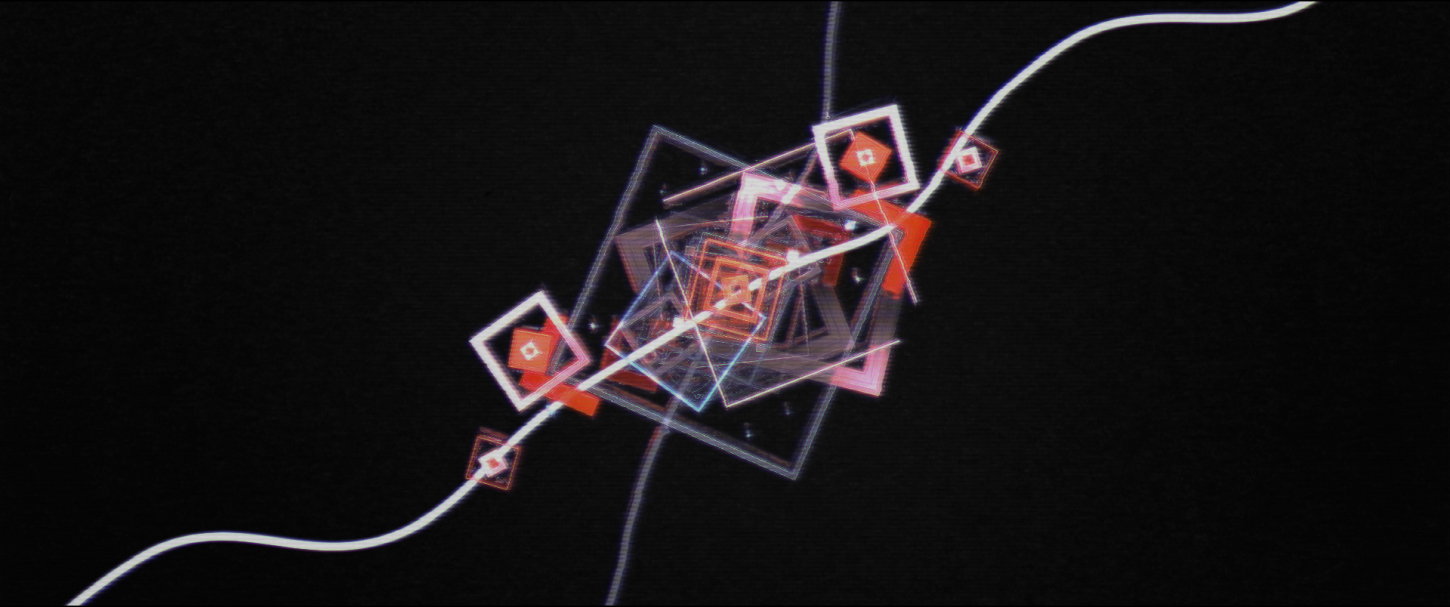
Personal work. Courtesy Steven Bussey.
So I started to dig deeper into film and TV production in this particular area. I was given the opportunity to work on my first feature film and after a one-week trial period and a few high end feature film projects I finally started on my new journey as a freelance motion graphics designer working mainly with UI design for film and TV.
As a freelancer all of a sudden I was networking, working with different veterans from the industry, different companies and making new colleagues and acquaintances. It was like two different worlds going from full-time to freelance but both of them were amazing for me and I owe a lot to all the people who steered me, helped me and those who gave me a chance and believed in me.
Continue reading »
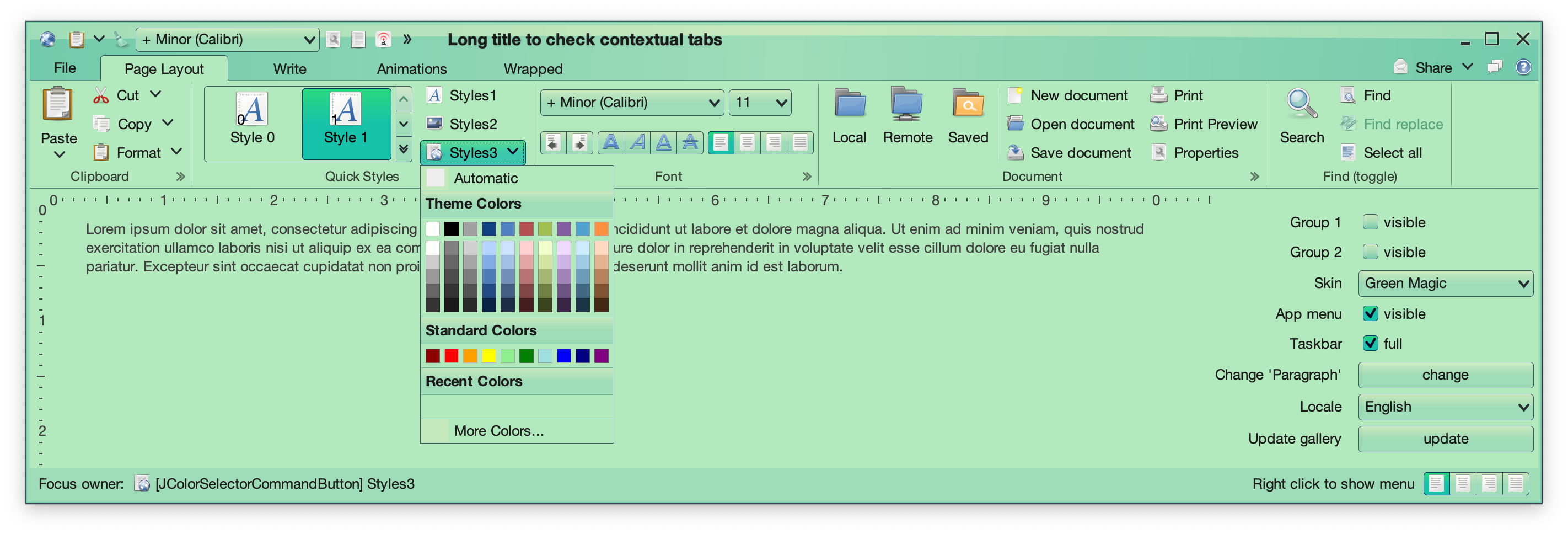
It gives me great pleasure to announce the fifth major release of Radiance. Let’s get to what’s been fixed, and what’s been added. First, I’m going to use emojis to mark different parts of it like this:
💔 marks an incompatible API / binary change
😻 marks new features
🤷♀️ marks bug fixes and general improvements
Dependencies for core libraries
- Gradle from
6.4.1 to 6.6.1
- Kotlin from
1.3.72 to 1.4.10
- Kotlin coroutines from
1.3.7 to 1.3.9
Substance
- 💔 Remove support for watermarks
- 💔 Convert
SubstanceSkin.ColorSchemes into an interface
- 😻 Support for overlay colors with
SubstanceSkin.setOverlayColor
- 💔 Support for specifying derived colors in color scheme files
- 😻 New API to mark a label as title pane text
- 😻 Text highlights that respect decoration areas
- 💔 Moved the Green Magic skin from
substance-extras to the core substance module (see the screenshot of this skin above)
- 💔 Aligned signatures of
ComponentState.getActiveStates and ComponentState.getAllStates
- 🤷♀️ Improved menu search widget UX
- 🤷♀️ Correct layout for edit context menu under RTL
- 🤷♀️ Fix concurrent modification exception thrown when ghost icon animations are enabled
Flamingo
- 💔 Pass command projection instead of command in ribbon contextual menu listener
- 💔 Remove
AbstractCommandButton class. Everything is in the JCommandButton class now.
- 😻 New
CommandButtonPresentationModel.Builder.setPopupHorizontalGravity API to contol horizontal alignment of command button popups
- 🤷♀️ Fix crash in opening a command popup menu from taskbar
- 🤷♀️ Fix memory leaks caused by model listeners
- 🤷♀️ Fix for root key tip chain not showing popup key tips of anchored commands
- 🤷♀️ Fix for overlays on ribbon popup content in the title pane / taskbar
Trident
- 🤷♀️ Fix inconsistent usage of conversion from duration fraction to timeline position
This release has mostly been focused on stabilizing and improving the overall API surface of the various Radiance modules. There’s still a long road ahead to continue exploring the never-ending depths of what it takes to write elegant and high-performing desktop applications in Swing. If you’re in the business of writing just such apps, I’d love for you to take this Radiance release for a spin. Click here to get the instructions on how to add Radiance to your builds. And don’t forget that all of the modules require Java 9 to build and run.
In this second installment (part I here), it is my pleasure to talk with John Renzulli and Arissa Blasingame of Chicken Bone VFX about their work on the first three seasons of “Westworld”.
Kirill: A few years ago, “The Hobbit” trilogy tried to push HFR [high frame rate] with its hyper-realistic feel, and a lot of film critics where pushing back against that, arguing that film needs that “artistic” layer where the viewers don’t “need” to be right there in the middle of it. What’s your point of view on it? Is it fine that that pinky finger might be missing from one of those dead bodies way out in the background?
 John: It needs to be layered, absolutely. It really depends on what we’re trying to do. For certain parts of entertainment world, that hyper-photo realism is essential. There you need that hyper frame rate with 8K level of detail and the focus on creating a feeling that it’s real.
John: It needs to be layered, absolutely. It really depends on what we’re trying to do. For certain parts of entertainment world, that hyper-photo realism is essential. There you need that hyper frame rate with 8K level of detail and the focus on creating a feeling that it’s real.
I think that in most of the entertainment platforms, and types of episodics and cinematics that we work on, you see that artistic layer that needs to limit some of that. Some of that comes from an old school love for film, and my personal favorite format is definitely 35mm. Because the celluloid itself is so responsible for helping create feeling and mood in the way that it was historically in the industry, to some degree that filmic quality needs to stay. It doesn’t mean that the resolution doesn’t get higher, and it doesn’t necessarily even mean that the image doesn’t get sharper.
But if you work with color, through careful analysis at the beginning of a project, talking about what resolution is required, and even working at the very end of the pipe to slightly degrade things to some degree – all of that can introduce that “filmic” quality that allow the viewer to have a specific response to the medium. Everybody sits in a slightly different place. Each creative we work with certainly sits in a different place there. But in most of the material that we work on, we find that there’s that artistic layer that somewhat limits the overproduction of something.
Sometimes it can be as simple as a creative choice, or it could be budget. Budget can also inform some of those decisions. More frames per second means more frames to render and more frames to fuss over. So, processes take longer and they inevitably get more expensive, so budget could inform some of that as well.
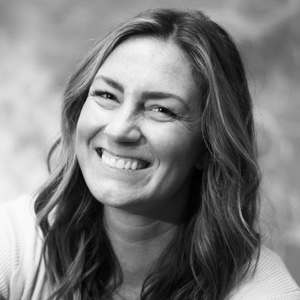 Arissa: When you’re trying to create something new with a director that has a vision that’s never been done before, you want to get it as close to real as possible. But sometimes there’s no bar to gauge that against. It depends on the task that you have been given, what that collaboration looks like, and where you get to with the final product.
Arissa: When you’re trying to create something new with a director that has a vision that’s never been done before, you want to get it as close to real as possible. But sometimes there’s no bar to gauge that against. It depends on the task that you have been given, what that collaboration looks like, and where you get to with the final product.
That’s always a little bit of a risk and a gamble. You don’t know how audiences are going to react to something that may be grounded in reality, but definitely has a fantastical side. It’s the risk and the reward of our industry. You can nail it or it might miss the mark, but it’s always a fun collaboration along the way to get to be that creative and work up something that the audience hasn’t seen before.
I’m sure that on “The Hobbit” they were trying something new and breaking the mold. And something like that is received differently across different audiences. And that then informs something in the future that can only get better with time. It’s an exciting spot to be in.
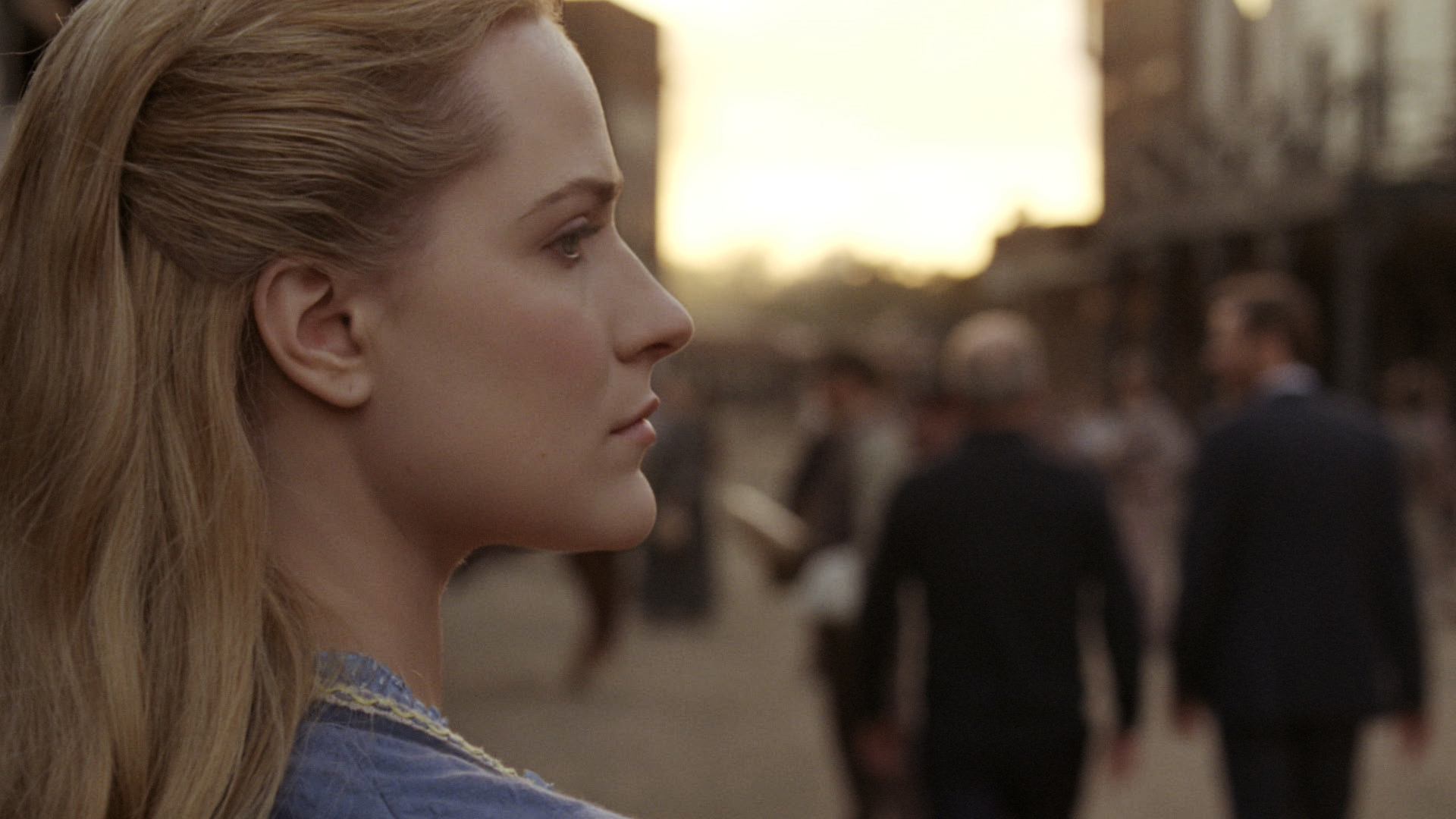
Chicken Bone VFX work on “Westworld”.
Continue reading »